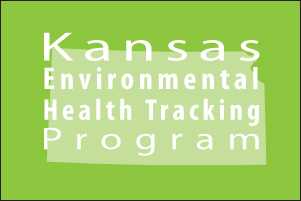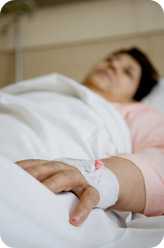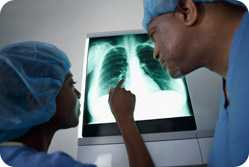Kansas's Success
Protecting Kansas Residents from Carbon Monoxide Poisoning

Carbon Monoxide Causes Sudden Illness at a Children’s Party
More than two dozen children were stricken with sudden severe headaches and nausea at an indoor pool party held at a hotel in a small Kansas town. Investigation found a surprising cause—carbon monoxide (CO) from the hotel’s pool heater. CO is a toxic gas that you cannot see or smell. It can make people sick or kill them in just minutes.
Tracking Helps Educate Residents about Less Common Sources of Carbon Monoxide
This incident and two others where people became ill after swimming near idling boat engines prompted the Kansas Tracking Program to educate residents about the less common ways people are exposed to CO. Tracking Program staff and the state health department public information staff developed an awareness campaign with educational materials that warn residents about risks for CO poisoning and ways they can prevent exposures to CO. Messages were shared through statewide news releases and social media.
Fewer CO Poisoning Reports after Education
The number of incidents of CO poisoning reported by the public and in the media decreased following the health education and outreach activities. The Tracking Program continues to monitor the incidence of CO poisoning and will maintain awareness activities.
CO incidents like the one at the hotel have prompted possible changes in state regulations that would require the medical community to report carbon monoxide poisonings. The change in regulations is currently under review by the department of health.
“Carbon monoxide is the silent killer that is rarely considered until after the harm has been done. The Kansas Tracking Program has brought attention to this problem and promoted prevention methods that will absolutely save lives.”
--Thomas Langer, MPA, Director, Bureau of Environmental Health, Kansas Department of Health and Environment
Mapping childhood lead poisoning data

What is the problem?
Lead is a heavy metal toxin that is commonly found in our environment. Lead affects the health of many, especially children. The most common cause of childhood lead poisoning is the deterioration of lead-based paint surfaces in homes. Nearly 70% of homes in Kansas are at risk due to the use of lead-based paints. Blood lead levels (BLLs) as low as 5 micrograms per deciliter (ug/dL) are associated with harmful effects on children's learning and behavior. In Kansas, a child is considered poisoned with a BLL of 10 ug/dL. Hundreds of children are poisoned by lead in Kansas each year. However, many children in the state are not screened for lead.
What did Tracking do?
The Kansas Tracking Program will partner with KDHE's Healthy Homes Program to evaluate data from the childhood blood lead program. Through mapping, the Kansas Tracking Program will be able to illustrate the areas of the state where BLLs are high and a large number of older homes are located.
Improved public health
Using the evaluation, the Kansas Tracking Program will be able to define objectively the scope of both childhood blood lead screening and childhood blood lead poisoning. This will provide valuable information to public health professionals to conduct targeted health outreach. The goal is to increase the number of children that are screened for lead in their blood and decrease the number of children with blood lead poisoning.
Decreasing cancer Cluster response time

What is the problem?
Cancer is the second leading cause of death in Kansas. In 2008, 5,286 residents died from cancer, and each year an average of 12,990 new cancer cases are diagnosed. Cancer directly or indirectly affects many Kansans. KDHE receives an average of eight inquiries about potential cancer clusters each year. Each intensive investigation requires weeks to months to complete.
What did Tracking do?
The Kansas Tracking Program will partner with the Kansas Cancer Registry to develop methods that use tracking data to decrease the time needed to respond to cancer cluster inquires. The program will also create maps and other tools to enhance communication to stakeholders.
Improved public health
The cancer data provided on the Kansas Tracking Network, along with the methods developed with the Kansas Cancer Registry, will increase the ability of public health professionals to investigate potential links between chronic diseases, such as cancer, and potential environmental health hazards.
Partnering with Kansas Radon Program

What is the problem?
Radon is the leading cause of lung cancer in non-smokers and the second leading cause of lung cancer overall. It is estimated that as many as 200 cases of lung cancer per year may be related to prolonged radon exposure in Kansans. Radon typically moves from the ground under and around a home through cracks and other holes in the foundation. The Kansas Radon Program's database of tests has more than 47,000 measurements, and 40% of them are at or above the U.S. Environmental Protection Agency's action level.
What did Tracking do?
The Kansas Tracking Program will assist the Kansas Radon Program to analyze data and discover trends that indicate increased risk to public health. The results of this analysis will be made available to all citizens through the Kansas Tracking Network.
Improved public health
This information will increase public awareness of radon. It will also allow public health officials and the public to make informed decisions and take action to prevent exposure and reduce the risks associated with elevated radon levels.
Kansas's Grantee Profile
[PDF 507 KB]- Page last reviewed: January 3, 2014
- Page last updated: August 10, 2011
- Content source:


 ShareCompartir
ShareCompartir